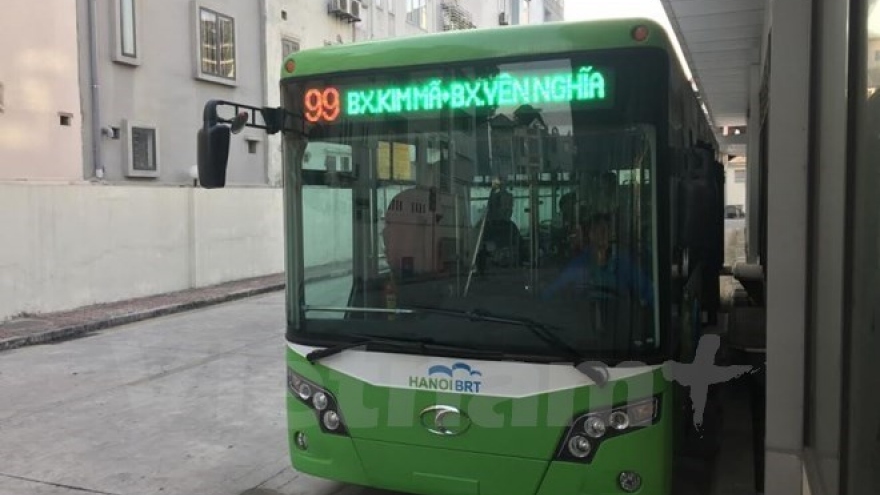Hanoi’s maiden BRT to offer month of free travel
The first-ever bus rapid transit (BRT) in Hanoi will offer free rides for one month after its inauguration on New Year’s Day, as local authorities seek to familiarize city dwellers with the new means of getting around.
 |
After January, the fare is set to be VND7,000 (US$0.31) per ride.
A fleet of 29 brand new 90-seater buses will be employed for the BRT service, which will depart every five to 15 minutes.
The buses will run in a specific lane within a 14.7km route that connects the Yen Nghia bus station in the outer district of Ha Dong and the Kim Ma station in Dong Da, passing 21 stops.
At a speed of 19.6 kph, the full route will take 45 minutes, five to ten minutes faster than conventional buses.
“The 90-seater buses used for the service boast modern design and technology, so drivers will not have to work as hard as their conventional peers,” Nguyen Hoang Hai, director of the BRT management board, said.
Hai added that there are few turns or crossroads along the route and expects that the service will always be on time.
The BRT will be in service from 5:00 am to 10:00 pm daily, with 358 rides every day except on Sundays, when there will be 264 rides.
The $53.6 million project has been funded by the World Bank.
Streets within the BRT route now have a specific lane next to the median strip dedicated to the rapid bus service.
BRT stops are also located on the median strips. Some of the stops are connected with pedestrian overpasses and others require passengers to cross the street, as per normal.
Worries remain
While authorities are upbeat that the BRT will facilitate the mobility of the capital’s residents, widespread skepticism remains amongst critics that the system will not be as effective as expected.
Speaking at a press conference on Monday, Vu Van Vien, director of the Hanoi transport department, reiterated that authorities are confident of the effectiveness of the BRT.
Vien defended the decision to invest in the BRT system, saying that the cost of this kind of transportation is only one-tenth of the elevated urban railway, and one-twentieth of the subway.
An elevated railway, the infamous Chinese-funded Cat Linh-Ha Dong project, remains under construction in the capital city.
“As per international experience, a BRT should be developed during the construction of an elevated urban railway,” Vien said.
Besides the maiden Kim Ma-Yen Nghia route, seven other BRT services are scheduled for development in the future, the department added.
Many local commuters and experts have expressed doubt that the BRT will reduce traffic congestion, suggesting that it would only worsen the situation on many of the busy streets the buses run on.
Addressing these concerns, Vien admitted that the BRT “may cause traffic disorder in its initial stages”.
“But we hope local residents will understand and share the hardship with authorities,” he said.

